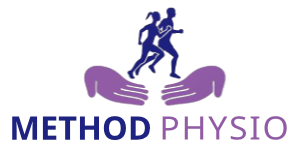Read Time: 2m 7s
Osteoporosis is a common condition that has become increasingly more prevalent within the clinic is osteoporosis. Osteoporosis happens when bones gradually become more fragile. The process can be painless until a bone suddenly breaks, however, once a break occurs it can lead to lasting disability and impaired quality of life.
It is the most common bone condition in humans with an estimation that 1 in 2 women and 1 in 5 men over the age of 50 years will have an osteoporosis-related fracture in their remaining life.

Risk Factors
Osteoporosis is more common in women than men. The most commonly affected areas of the body are the wrist, hip and spine. Other common factors that can contribute to the development of osteoporosis are: Sedentary lifestyle (lack of physical activity), excessive drinking, smoking, menopause, low body mass index (BMI) (less than 19kg/m2), and medical conditions (cancer, arthritis, kidney or liver disease)

Prevention
There are many things you can do to prevent or delay the development of osteoporosis. Lifestyle changes such as daily exercise, cessation of tobacco consumption, reducing alcohol intake and ensuring adequate intake of calcium and Vitamin D reduce the risk of developing osteoporosis.
Treatment/Management
Once osteoporosis has been diagnosed, there are a number of different medications that can be prescribed by doctors, in order to reduce the rate at which your bones are being broken down. Falls are the leading cause of osteoporotic fractures. Therefore, measures such as adequate footwear, removal of rugs inside the house and balance exercises should be encouraged especially for elderly patients and patients who are taking medications that effect mental alertness. Adequate intake of calcium and vitamin D should be ensured among osteoporotic patients. Cessation of tobacco use and excessive alcohol intake should also be encouraged. Regular exercise such as walking, strength training and balance training is encouraged to improve bone density, increases muscle strength, maintain or improve posture, improve balance and relieve or decrease pain.

All postmenopausal women and men aged 50 years and above should be evaluated for osteoporosis risk in order to determine if they need further examination. In general, the more the risk factors, larger is the risk of fracture. Osteoporosis is preventable and treatable, but because there are no warning signs prior to a fracture, many people are not being diagnosed in time to receive effective therapy during the early phase of this disease.
If you want more information on the topic visit our clinic and pick up a brochure. Stay tuned to our social media for information on upcoming exercise classes starting in August.

